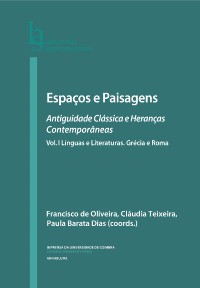Please use this identifier to cite or link to this item:
https://hdl.handle.net/10316.2/31757| Title: | Espacios para la curación: la domus en la tradición hipocrático-galénica | Authors: | Fernández Tijero, Mª Carmen | Keywords: | Avicena;Bernardo de Gordon;De ingenio sanitatis;De modo medendi;Domus;Galeno;Hospital;Insula;Montpellier;Roman architecture;Valetudinaria;Villa;Arquitectura romana;Avicenas;Bernardo de Gordon;De ingenio sanitatis;De modo medendi;Galeno;Hospital;Insula;Montpellier;Valetudinaria;Villa | Issue Date: | 2012 | Publisher: | Imprensa da Universidade de Coimbra Associação Portuguesa de Estudos Clássicos |
Journal: | http://hdl.handle.net/10316.2/2351 | Abstract: | From the very beginning of the development of curative methods in ancient Roman society we can observe a special union between a determined space and healing abilities, as is known about the history of a kind of clinical assistence on the Tiberine Island. There were different places devoted to the healing of illnesses in the ancient Roman civilization: the tabernae medicae, both private and public assistence, Roman soldiers set up their valetudinaria in the base-camps during their conquests; as well as they were called valetudinaria the medical assistence rooms in the country properties. However, we shall pay special attention to the space of the domus as a place where the doctor examines, diagnoses, treats and heals the sick, and furthermore we can see how these practitioners attend as something relevant for the healing procedure not only the symptoms of the sick body, but also the space where this sick body is: the materials, orientation, distribution, etc. Roman builders and architects did follow strict rules of hygiene in examining the place where they were building; Vitrubio`s work De architectura provides the best example of these precepts. At this point, the medieval medical texts which follow the Hippocratic- Galenic tradition, and develop it at the incipient European universities, give us the evidence for the importance of the space for healing in the ancient Roman and the european medieval civilizations. We may observe appearance of a practical genre of texts treating the medical visit in the domus step by step. Among them, we examine the Modus medendi and De ingenio sanitatis by Bernard de Gordon, professor and practitioner at the University of Montpellier in the XIV century. | URI: | https://hdl.handle.net/10316.2/31757 | ISBN: | 978-989-26-0293-6 (PDF) | DOI: | 10.14195/978-989-721-069-3_11 | Rights: | open access |
| Appears in Collections: | Espaços e paisagens: antiguidade clássica e heranças contemporâneas: Vol.1 Línguas e Literaturas: Grécia e Roma |
Files in This Item:
| File | Description | Size | Format | |
|---|---|---|---|---|
| 11-_espa_os_e_paisagens._antiguidades_cl_ssicas_vol_i.pdf | 153.75 kB | Adobe PDF |  |
Items in DSpace are protected by copyright, with all rights reserved, unless otherwise indicated.
